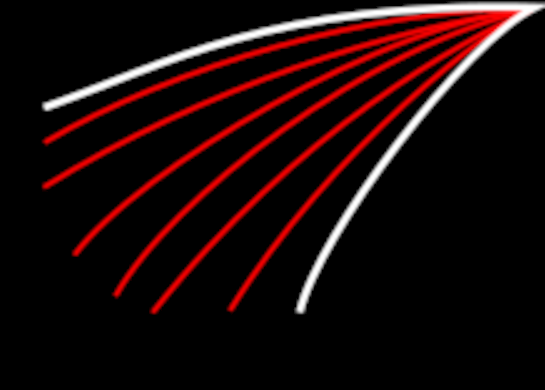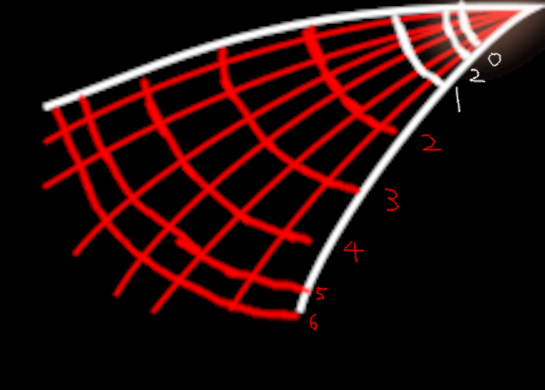Animation Tutorial: Electric Sparks
(insert introduction here)
Overview
(explain what an electrical spark is)
Components of an Electrical Spark
Base
Trail
Glow
Modeling
Boundaries and Direction

The first thing to do is to determine how big the resulting electrical spark should be, specifically as a result of two factors.
- Length: how long the spark can travel before it fizzles out
- Width: how many trails are produced by the base
The components of the spark are thereby restricted to the space within the resulting boundary, represented by the white lines.
Next, the spark requires a direction. As the sparks travel, the resulting trail should follow a given path; deviating from the path causes jitter, which isn't pleasant to look at. For the sake of consistency, the red lines represent potential paths the primary and auxiliary trails can take. While it's a good idea to plan out specific paths for the trails beforehand, it's more than acceptable to plot out a number of equally-spaced lines and work from there.
That said, there should be a limit on the number of trails present. Remember: a spark is a streak of light. If too many trails are drawn, the result will be less a beam of light and more a block of solid color. For this reason, if paths are planned before hand, only a small number (around 3) of paths should act as primary trails, with each primary trail accompanied by a similarly small number of auxiliary trails
As always, the boundary and direction depend on context. However, it's important to know that a spark is fast. For example, at 15 frames per second, a spark only needs between 5 and 10 frames; anything less is to fast to register, and there can't be so many frames that the spark no longer looks like a streak of light. Therefore, size is also dependent on the number of frames involved. If a spark is too big and too many frames are needed, try shrinking the boundaries and try again. Conversely, if the spark is so small that the minimum frame count isn't met, a bigger boundary is needed.
Rate of Travel
Drawing the Frames
Frames 00 to 01
Determining boundaries and motion of the spark
Frames 02
Determining boundaries and motion of the spark
Frames 03 to 07
Determining boundaries and motion of the spark
